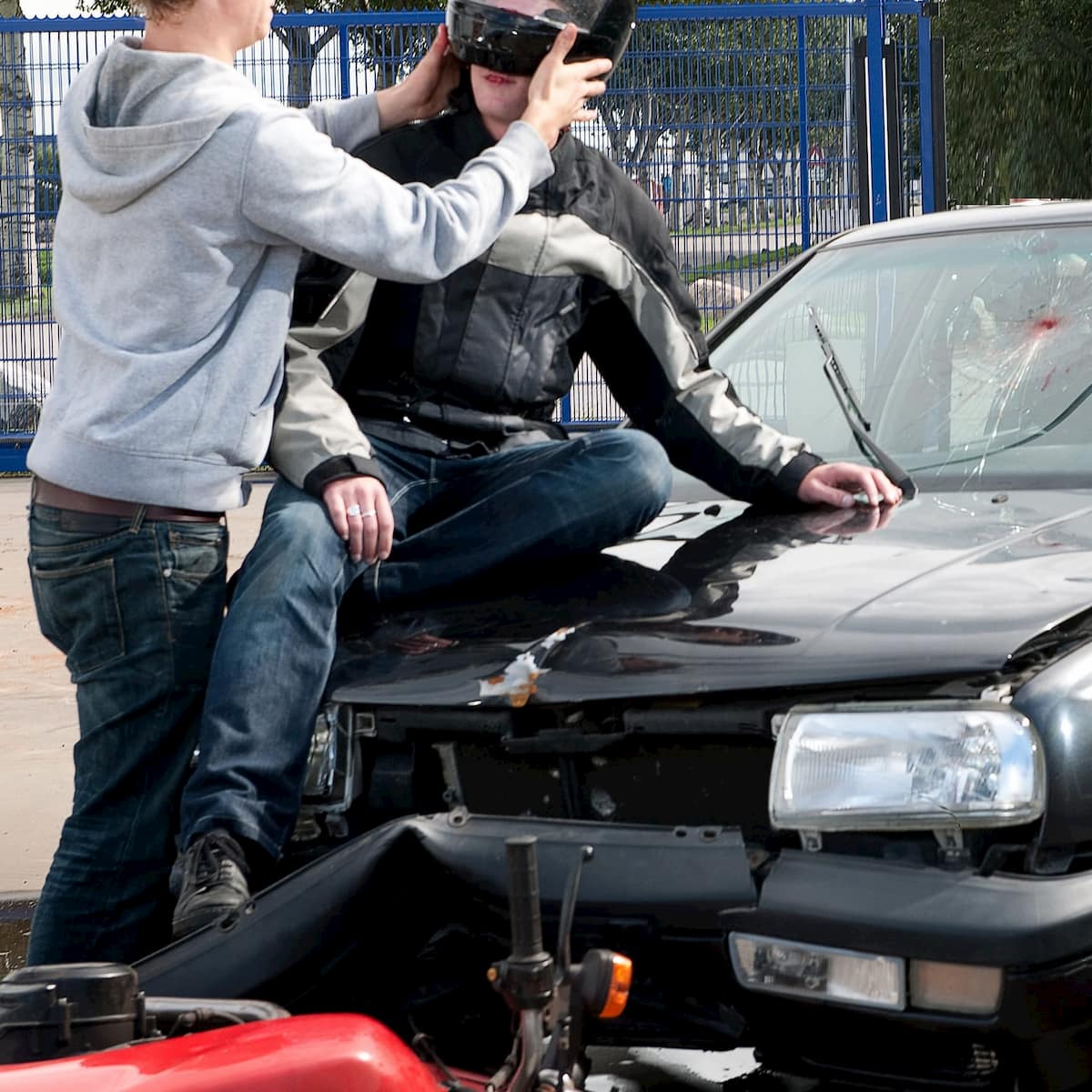Though rear-end collisions are the most common for passenger vehicles, for motorcycles, they make up only 6 percent of all motorcycle collisions. However, when any motorcycle crash occurs—including a rear-end collision—the motorcycle rider is a much greater risk of death or injury.
Although riding a motorcycle comes with a heightened risk, it should not preclude our clients from participating in a riding pleasure they love. The lawyers in our firm are committed to upholding the rights of motorcyclists who have been injured by the negligence of another. Our goal is to provide you with the best representation available so you can focus on healing.
Contact us today if you were involved in any type of rear-end motorcycle accident in Los Angeles.
 How Much Is Your Settlement Worth?
How Much Is Your Settlement Worth?
Schedule a completely free, no obligation consultation with our team
Schedule Consultation
Causes of Rear-End Collisions
According to a study by the National Highway Traffic Safety Administration, motorcycles make up only 3 percent of all registered vehicle in the U.S., however, they account for 35 percent of all vehicle accident fatalities.
The NHTSA also finds that out of the all motorcycle rear-end collisions, 68 percent happen with the motorcycle running into the rear of an automobile. This leaves only 32 percent left of crashes where the motorcycle was rear-ended.
Of all motorcycle accidents, 25 percent are rear-end collisions, and we know that a large majority happen when the motorcycle runs into a car or truck. Of those, these are the most common causes:
Motorcycle Colliding into Vehicle
- Sudden Stops: Motorcycles can stop faster than cars and trucks, but they still are susceptible to running into a car that stops suddenly.
- Speeding: The higher speed of the vehicle, the more likely it is to rear-end another vehicle.
- Distracted Driving: All it takes is one moment of inattention and a motorcycle rider can hit another vehicle.
- Impaired Driving: Alcohol slows a person’s response time, and even if not distracted, an impaired driver is less able to stop in time.
- Road Conditions: On dry pavement, motorcycles can stop quicker and in less space than a car. However, if the road conditions are poor such as ice, rain or gravel, then stopping a bike can be difficult.
- Aggressive Driving: Motorcycle riders are more often cited for weaving in and out of traffic and driving aggressively. This can be dangerous and cause rear-end collisions.
Motorcycle Being Rear-Ended
- Motorcycle not Noticed: The low visual profile of a motorcycle makes it difficult for drivers to see. Often times a motorcycle will be well within the field of vision of a driver and go unnoticed for a moment, which it all it takes.
- Motorcycle Stopping Distance: Since motorcycles can stop quickly, this can work against them and cause them to be rear-ended.
- Road Conditions: This also creates a problem for motorcycle riders when cars can’t stop in time.
- Distraction: Texting and other distractions can add to the low visibility of motorcycles.
Motorcycle Rear-End Injuries
When a motorcycle rider gets into an accident, he or she is 35 times more likely to be killed. This also means that they are more likely to get seriously injured in a crash as well. This is because of the lack of protection for a motorcycle. There is not protection around the person except the front handlebars and windshield and the back tire and fender of the bike.
This means that when a motorcycle gets into an accident, there is little protection and the rider is often thrown into the front of the bike and harmed by the only protection the bike has.
There are common injuries to motorcycle rear-end collisions.
Rider Rear-Ending Vehicle:
- Traumatic Brain Injury
- Neck and Spinal damage
- Broken Legs/Wrist
- Bruised/Broken Ribs
Motorcycle Being Rear-ended
- Thoracic Spine Injury: (Whiplash)
- Lower Vertebra Spine Injuries
- Broken Legs
- Lower Torso Injuries
How to Avoid Rear-End Collision on a Motorcycle
Avoiding Being Rear-Ended
- Use Rear-View Mirror: When coming to a stop, look in mirror to keep an eye on the driver behind you.
- Plan Avoidance Maneuver: Be thinking about where to go if you see a car coming too fast. Bikes are quick and can slip between cars.
- Flash Brake Lights: Touch brakes to flash them as you stop to alert the driver in front of you. At night, your small profile and single rear light can get lost in a sea of car lights.
- Buy Brighter Brake/Tail Lights: Replace factory lights to increase visibility profile.
Avoiding Rear-Ending Vehicles
- Slow down: Bikes are fun to ride and for some, the faster the better. However, speed can increase your chance of a rear-end or other serious crash. When in traffic, slow down appropriately.
- Keep Screen and Face Shield Clean: Bugs, dirt, grease/oil can build up on a rider’s front screen and their helmet shield.
- Blind Spots/Be Aware: Cars will sometimes change lanes in front of a motorcycle rider because the rider is in the blind spot. When this happens, the vehicle will suddenly stop leaving you less room to stop than you thought.
Rear-End Liability
There’s the old adage, you rear-end someone, it’s your fault. This is often true, however, when it comes to a motorcycle collision, there can be circumstances where rear-ending another person can be the fault of the person in front.
One example is when a motorist changes lane when not seeing the motorcycle and then stops causing the rear-end collision. While this happens with cars, it’s especially dangerous for riders who can be seriously injured.
Contact Us Today.
So don’t take the word of the insurance company if you are injured in a rear-end accident on a motorcycle. Talk to an attorney to get unbiased advice and have your case evaluated. Talk to a Los Angeles Motorcycle Accident Lawyer today to start getting back on your feet after a motorcycle injury.

